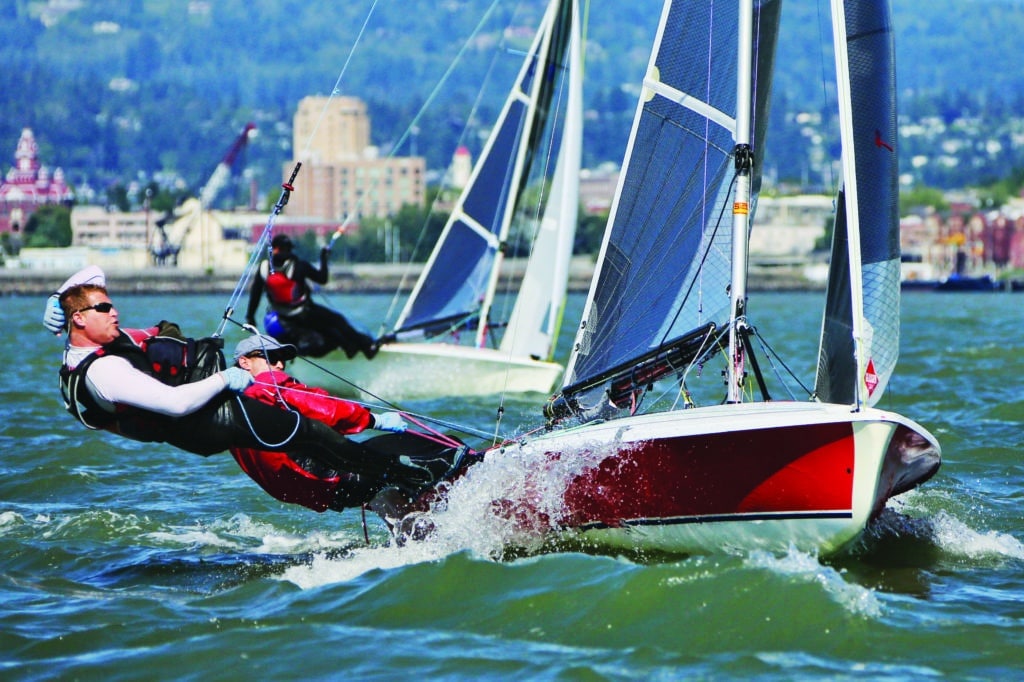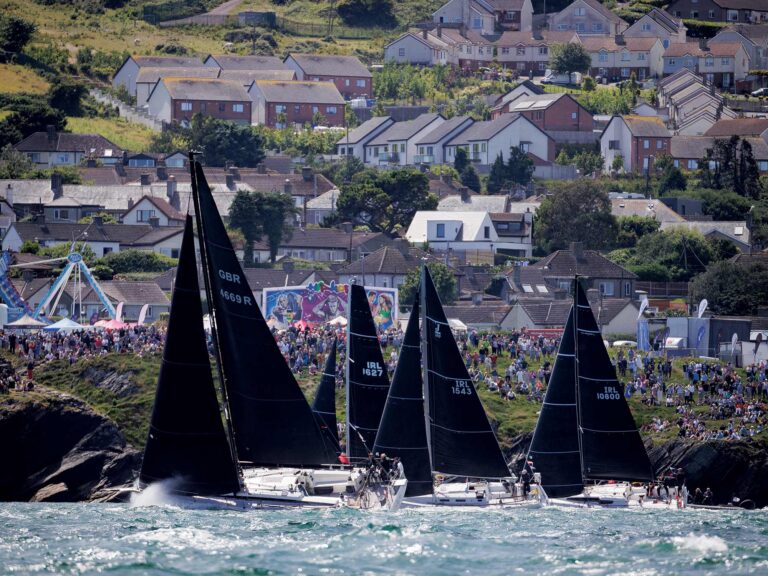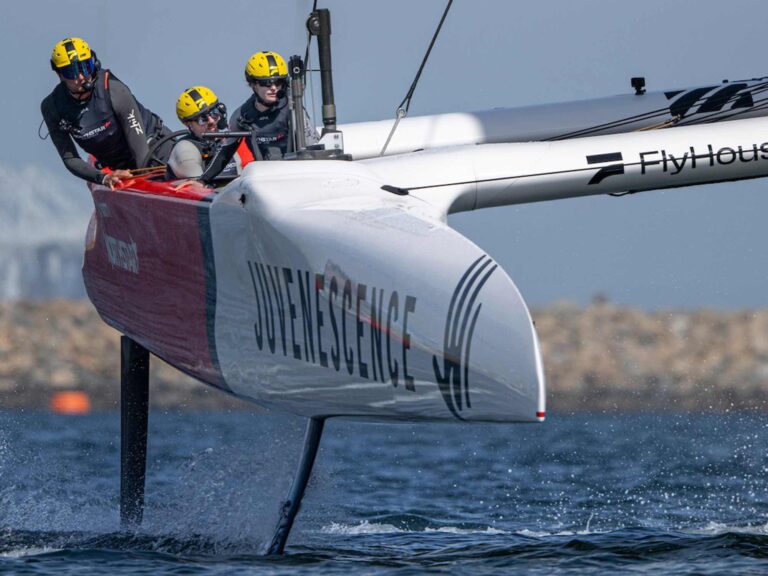
There are important lessons to be learned when fleet stalwarts give back to the class they love. At the 2016 505 North Americans, winner Riley Gibbs and tail-ender Kevin Maguire both had eager but very different mentors. The talented 19-year-old Gibbs tapped into the enormous vault of 505 know-how that is Howie Hamlin. Not surprisingly, Hamlin, with crew Jeff Nelson, and Gibbs finished only three points apart to take second and first, respectively, with the student nipping the mentor in the 10-race series, sailed in spectacular conditions on Bellingham Bay.
At the other end of the fleet, new 505 racer Kevin Maguire lucked out with Paul Von Grey as mentor. Maguire bought the 505 thinking it might be a comfortable daysailer for him and his wife. “That shows how naive I was,” he says. Von Grey heard about the purchase and sought out Maguire directly, asking what he could do to help.
This is Von Grey’s modus operandi. He doesn’t wait for sailors to come to him; he goes to them. “It’s a sickness,” Von Grey says, and there is at least a tinge of obsessiveness about him when it comes to promoting the Northwest 505 fleet. He’ll help you find a boat, fix it, rig it, tune it, and teach you the finer points of crew work and technique. He caught the 505 bug decades ago in California, and over time has become a bottomless well of assistance for Pacific Northwest 505 racers, who beat a regular path to his garage workshop on Whidbey Island.
Maguire’s aged “Five-O” soon took its turn in the Von Grey boat shop, where a tweak here and there was made, heeding Von Grey’s advice: “Don’t do too much to the boat; see if you like sailing it first.” Maguire followed Von Grey’s rules and now knows much more about the boats. He is looking to buy one of the used 505s due to arrive in September.
Von Grey strongly believes that developing new sailors and helping the midfleet boats get faster is vital in fleet-building. “What kind of guy would I be if all I thought about was my own performance?” he says.
Von Grey is big on postrace debriefs, and on Saturday at North Americans, there was a large gathering. Von Grey says it wasn’t his doing, but it was around his trailer that the sailors naturally assembled.
By contrast, the Hamlin-Gibbs relationship took shape as young Gibbs grew up sailing at Alamitos Bay YC, in California. “Riley found us,” Hamlin says. “He was always hanging around.” Gibbs was in the right place at the right time when Hamlin lost his training partner, Mike Martin, to other sailing ambitions. Hamlin invited Gibbs to the team’s practices. They’d practice starts, roundings and speed with help from Jay Glaser on a coach boat.
“Riley is the most talented young 505 sailor I’ve ever come across. And he’s just as good working on the boat as driving it,” says Hamlin. He soon realized training with Gibbs would benefit him as well. “It’s actually quite selfish to develop a training partner like that,” he says.
That “selfishness” included connecting Gibbs with his crew, Reeve Dunne, and setting him up with a used, tuned and very fast Waterat.
The 505 itself is very enticing to potential fleet members. Builders can produce hulls at 280 pounds that remain competitive for decades without relying on exotic materials. Crew weight is important, but with the right techniques and settings, both light and heavy crews can hang in there. This flexibility means a wide size range of men, women and couples can be competitive. “It was great to see so many women at this regatta,” says Carol Buchan, who with husband Carl finished sixth overall in the North Americans.
Talk to any longtime 505 sailor, and they’re more likely to mention the community than the boat. “It’s just such a supportive group,” Maguire says. When there’s support for the front, middle and back of the fleet, everyone wins.









